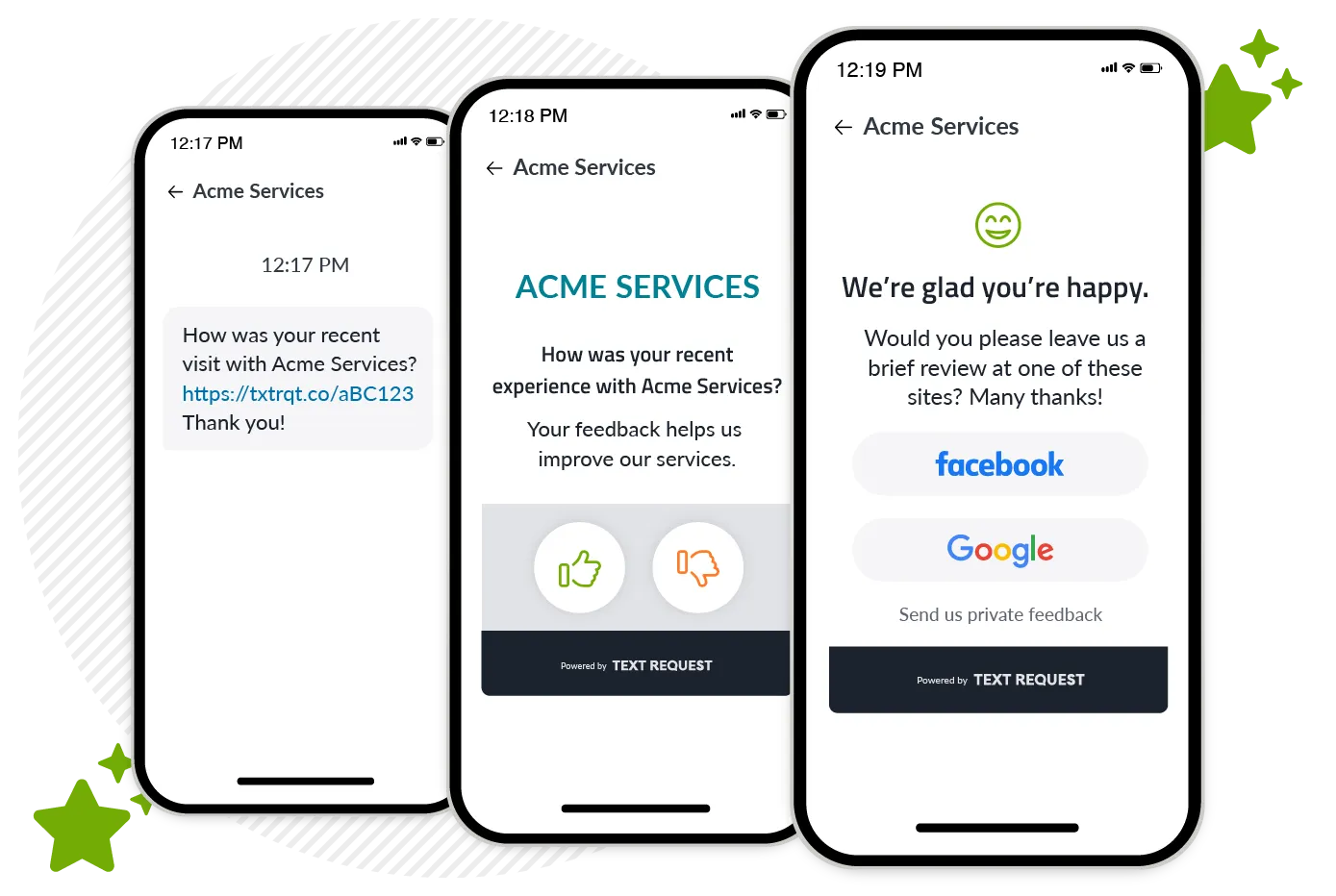Insight
Responding to Online Reviews: The Ultimate Guide
Responding to online reviews goes hand in hand with managing your online reputation. Here’s how to do it best.
Earning online reviews is crucial to growing your business, but it’s not enough to just get the reviews. Your responses to feedback dictate whether new customers choose to work with you or whether previous customers come back. This guide will cover every aspect of responding to online reviews gracefully, whether the feedback is positive, negative, neutral, or fake.
Should you respond to online reviews?
Managing online reviews has become a key factor in how businesses like yours rank in Google searches and draw in more new customers. That said, increasing your number of reviews is only the first part of review management—the second is actually responding to them.
The benefits of responding to online reviews are:
You boost existing customer loyalty
You learn what to improve from critical feedback
You have a chance to win customers back when they share negative feedback
You attract more new customers
People not only read your online reviews, they pay close attention to how you handle the feedback. Potential customers determine how good of an experience they’ll have by how you respond.
How quickly should you respond to customer reviews?
You ideally want to respond to online reviews as soon as you get them. Speed is also huge for if and when customers bring complaints or suggestions for improvement. If you aren’t on top of things, you may lose both that customer and potential new customers who are viewing the interaction.
A fast response shows the customer who left the review that you care about them, which inturn helps with retention and boosts your overall reputation. That said, take time to thoroughly read and understand each review as they come in, so you can create the best responses possible.
None of your responses should ever be the same, because the reviews you receive also won’t be the same. Your responses will vary depending on if the feedback is positive, negative, neutral, or even fake. We’ll cover how to handle each of those scenarios below.
How should you respond to positive online reviews?
A positive review will typically have a four or five-star rating and mention all the awesome things you’re doing. While reviews like these usually speak for themselves, you still want to take time to respond to them by:
Directly addressing the customer by their name
Thanking them for their time
Acknowledging specific parts of their positive feedback
Reminding them you’re available to help with any of their future needs
A detailed response with these elements shows you actually heard what the customer had to say, compared to an empty response.
Good: “Thanks, [Name]! We’re glad [product/feature] is helping you with [problem/use case]. If you ever have any needs in the future, we’re here to help.”
Bad: “Glad we can help, thank you!”
Taking time to write a quality response will help you attract any potential customers reading through your reviews.
How should you respond to neutral online reviews?
Sometimes you may get a three or four-star review where the customer wasn’t dissatisfied, but they weren’t particularly thrilled either.
“We love this, but [blank] could be better.”
Or:
“They’re awesome! We wish they had [blank] though.”
These neutral reviews are actually some of the best, because they show you’re not getting reviews from biased people. They make your business look more legitimate, plus give you an opportunity to show off your stellar customer service.
Your response should include:
An update that your team is currently looking into it
A link to an already existing product, service, or feature that meets the customer needs
Or just simple gratitude for the feedback
The best-case scenario is you point out a solution the person didn’t previously know existed, so you have a chance of increasing their customer loyalty even further. Just make sure you have a positive tone that doesn’t come off as "Well actually..."
How should you respond to negative reviews?
First things first—don’t panic. Negative reviews are not the end of the world for your business. In fact, customers are actually hesitant to work with businesses that only have good reviews, because it’s more realistic for there to be at least a few bad ones. Nobody’s perfect.
Negative reviews give you an opportunity to respond professionally to feedback and impress. Most people can tell if the negative reviewer is full of it or in the wrong, and you get to look like the bigger person when you respond calmly.
Below are three tried and true steps to responding to legitimate negative feedback from your existing customers.
1. Welcome constructive feedback.
Legitimate critical customer feedback is an opportunity to identify any kinks you’ve missed in your system. If you have more than one negative review around the same topic, that’s a solid cue to get with your team and talk solutions. Your response could be something like:
“Thank you for taking time to leave us feedback. Our team is looking into ways to improve.”
Let the customer know you’re working to solve the problem, and they will see your dedication to making improvements.
2. Gently correct misinformation or confusion.
Sometimes you’ve done nothing wrong, and the reviewer is just unreasonably upset or in the wrong. They didn’t do their research to fully understand what your product does, expect you to have a service or feature you don’t offer, or have unreasonable demands with a terrible attitude.
That’s not on you, and other consumers will recognize that. The key is to stay calm, and direct the angry reviewer to the next best option you can provide. Just avoid a direct “no” or making any false promises. Staying positive is always a safe bet in reputation management. You can also explain why something is the way that it is, like:
“I can understand why you were frustrated. We do things this way because of [XYZ]. But I’ll take this back to our team and see how we can improve on it.”
Acknowledge the customer’s frustration, provide a reasonable solution, then move on. Lingering on the problem can sometimes escalate things.
Remember you are always representing your brand—not just an individual employee. Staying calm, even if you feel the reviewer doesn’t deserve it, will always be the best look for your business.
3. Compensate bad customer experiences.
If you know the bad review is your team’s fault, take action. Stay calm, directly apologize, and offer something that’s feasible for your business to provide.
One of the best compensations is showing the customer you made an effort to fix the situation. This should be done publicly on the review platform. That way digital bystanders know you took action with a response like:
“We apologize for your bad experience. Our team would like to refund you by offering a free/discounted [product/service] for future use. Please contact us at [email], and our team will get that to you.”
There’s a small chance the customer may actually edit their feedback to reflect the positive experience when this happens. All this, of course, is assuming the negative feedback is legitimate, and not from a fake reviewer.
How do you tell if a review is fake?
Your business typically hasn’t done anything to warrant getting fake reviews. It just happens because there are so many bots on the internet and people making mistakes.
That said, don’t entertain fake reviews. Call them out publicly and flag them for take down—but only after you’re absolutely positive they’re fake.
Fake reviews will usually include:
Typos
Multiple exclamation points
Use of all CAPS
Bizarre usernames
Factual inconsistencies
Details that don’t relate to your business or industry
Always check your records to see if the review was even written by one of your customers, if the data is available. Calmly pointing out factual inconsistencies like these in your response to the review will show other consumers that the feedback is fake.
The key is that you do it calmly. Some platforms will also let you report to remove reviews that are spam or include harsh language.
How do you report fake reviews on Google?
Here are the steps to reporting a fake Google review:
Click the three dots next to the review you’d like to report
Select “Report review”
Google will remove the review if it violates their policy. That said, if Google doesn’t remove a fake review that you feel does violate their policies, you can escalate the issue to their support team by appealing the review.
Here are the steps to appealing a reported review:
Go to Google’s Reviews Management Tool
Choose the email address that you use to manage your Business Profile
Select “Confirm”
Choose your business, then select “Check the status of a review I reported previously”
At the bottom of the page, select “Appeal eligible reviews”
Select the reviews you want to appeal
Select “Continue,” and then “Submit an appeal”
In the new tab, fill out the form and submit
Google will then email you about whether or not your appeal was accepted sometime later. If you don’t get the answer you want, remember that most consumers can also identify when reviews are fake.
How do you report fake reviews on Facebook?
Here are the steps to reporting a fake Facebook review:
Go to your business’s Facebook page
Below your company name on the left, select “More” and then “Reviews”
Click the three dots next to the review you want to report
Select “Report post”
Facebook does not currently offer a way to appeal any reported reviews they’ve decided not to take down. That said, you can always calmly point out that the review is fake in your response. Just refer to the advice we offered above.
How can you monitor when you get new reviews?
All the information we’ve covered is only helpful when you actually know when new reviews come in. Otherwise how are you going to respond in a timely manner?
While you can manually check between review sites, we recommend getting a platform that automatically does that for you.
Text Request connects to your Google My Business, so you get updates whenever new reviews come in. We also give you the power to directly respond to those same reviews from inside Text Request.
This gives you one, organized place to facilitate your review management process. That way you never miss out on an opportunity to make a positive impression with consumers.
Start Responding to Online Reviews with Text Request
Ready to take control of your online reputation with a defined review management process? We have the tools to make both requesting and responding to online reviews easy.
Our team of experts is also here to help you get started and answer any questions you may have about review responses. To learn more about using Text Request for handling online feedback, contact us or visit our Reviews landing page.




